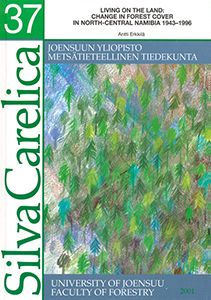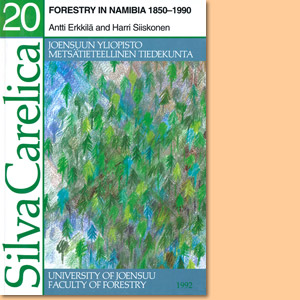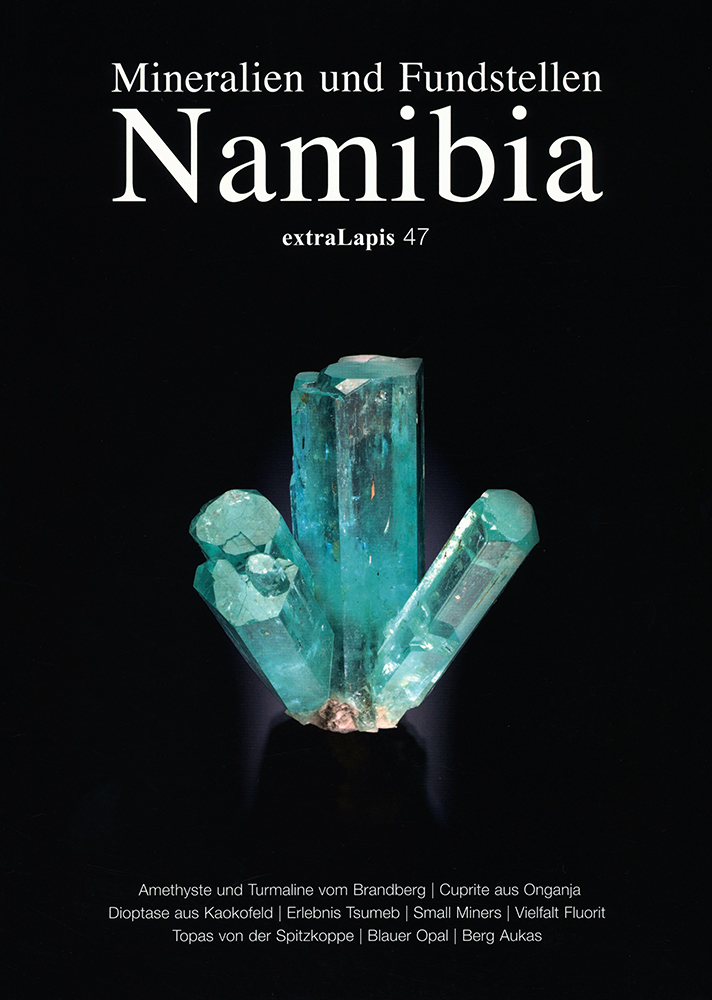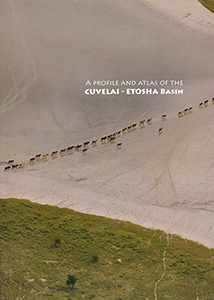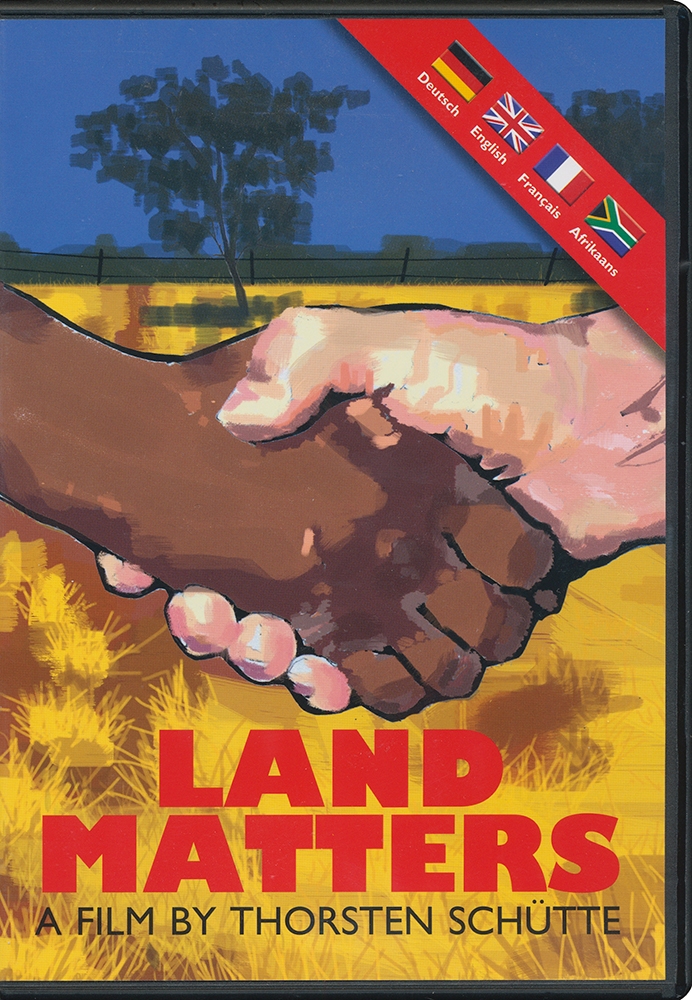Living on the Land. Change in Forest Cover in North-Central Namibia 1943-1996, by Antti Erkkilä
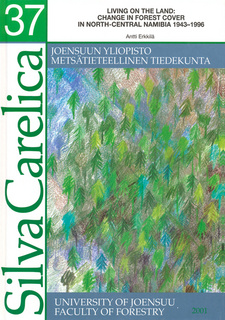
Living on the Land. Change in Forest Cover in North-Central Namibia 1943-1996, by Antti Erkkilä. ISBN 9524580497 / ISBN 952-458-049-7
Living on the Land - Change in Forest Cover in North-Central Namibia 1943-1996, by Antti Erkkilä - Degradation of wood resources in north-central Namibia: The underlying forces driving deforestation and forest degradation are complex; and even though there are global dimensions to this issue, the causes vary greatly from country to country (IPF 1996).
In Namibia, which is located in tropical southern Africa, forest ecosystems are fragile and are affected by desertification. The international Convention to Combat Desertification (UNCCD) defines desertification as land degradation in arid, semi-arid and dry sub-humid areas resulting from various factors, including climatic variations and human activities. The subregion of tropical southern Africa includes Angola, Botswana, Malawi, Mozambique, Namibia, Tanzania, Zambia and Zimbabwe. In Namibia, most of the forests are located in the north-central and northeastern parts, although there are also forested areas along the ephemeral rivers in the central and western parts of the country. Forests are estimated to have comprised 12.4 million ha in 1995, which is 15 % of the total land area. During the period 1990-1995, the estimated annual loss of forest cover was 42 000 ha, the annual rate of deforestation being 0.3 %. The loss of woody vegetation cover and the consequent environmental and socio-economic problems are severe, especially in the Owambo area of north-central Namibia.Several hundred years ago groups of Bantu-speaking cattle-herding people migrated from the north and northeast to the Cuvelai drainage basin located in the southwestern part of Africa. The collective name given to these people is Owambo. When Owambos migrated to the Cuvelai drainage basin, the land was already utilised by small groups of hunting and gathering people, who apparently were loosely organised. The collective name used to define these people is the Bushmen or the San. When used in the pre-colonial context, the term “Owamboland” refers to the area in south-central Angola and north-central Namibia inhabited by the Owambo communities, as well as the pastures and hunting grounds belonging to their sphere of interest. As a consequence of the scramble for colonies in Africa, Owamboland was divided into a Portuguese (northern) and a German (southern) sphere of influence. After the colonial administration was consolidated, the northern part became administratively known as Baixo Cunene, or simply Cuanhama, whereas south of the demarcation line the name “Owamboland” was kept. In the present study the term “Owambo area” is used to define the former district of Owamboland. This area, comprising 5.2 million ha of semi-arid land, is outlined between the mountains of the Central Highland in the west (c. 14° E) and the Kavango Region in the east (18° E). It is bordered by Angola in the north (c. 17°23' S) and the Etosha National Park and the privately owned commercial farming area in the south (c. 18°30' S). The Owambo area completely covers the current province of Ohangwena as well as the northern parts of Omusati, Oshana and Oshikoto. (...)
This is an extract from the book: Living on the Land. Change in Forest Cover in North-Central Namibia 1943-1996, by Antti Erkkilä.
Book title: Living on the Land
Subtitle: Change in Forest Cover in North-Central Namibia 1943-1996
Author: Antti Erkkilä
Series: Silva Carelica, Band 37
Editor: Hannu Mannerkoski
Publisher: University of Joensuu, Faculty of Forestry
Joensuu, Finnland 2001
ISBN 9524580497 / ISBN 952-458-049-7
Hardcover, 18x25 cm, 118 pages, numerous colour photos, illustrations and tabels
Erkkilä, Antti im Namibiana-Buchangebot
Living on the Land. Change in Forest Cover in North-Central Namibia 1943-1996
Living on the Land is an analyse of change in forest cover in the Owambo area of north-central Namibia, focusing on the domestic use of wood in constructions on farms in the timespan 1943-1996.
Forestry in Namibia 1850-1990
Forest policy and legislation in Namibia during 1850-1990, as well as deforestation and bush encroachment, is topic of this most interesting book.
Weitere Buchempfehlungen
extraLapis 47: Namibia. Mineralien und Fundstellen
extraLapis 47: Namibia. Mineralien und Fundstellen zeigt die große Vielfalt und Schönheit der Mineralien aus Namibia.
A profile and atlas of the Cuvelai-Etosha basin
This atlas describes the main features of the Namibian part of the basin and provides an overview of the entire profile Owambo or Cuvelai-Etosha Basin.
Land Matters. Strategien als Reaktion auf Auswirkung der Landreform in Namibia
Wie Farmer in Namibia Strategien als Reaktion auf Auswirkung der Landreform entwickeln und ihre Gedanken darüber zeigt der Film Land Matters.

